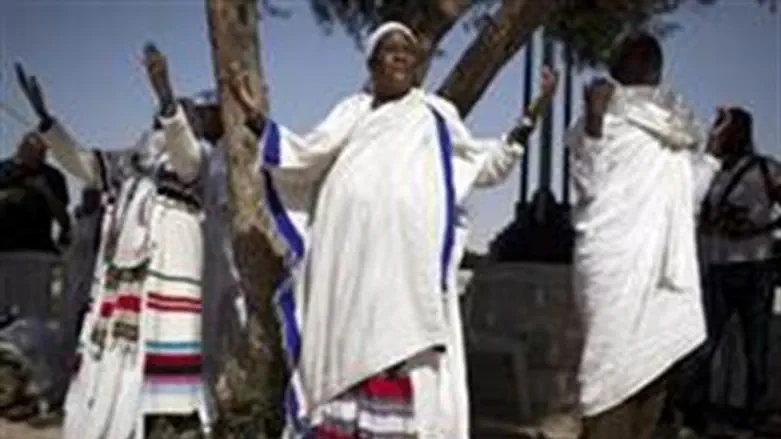
Thursday marks the holiday of Sigd, a traditional holiday celebrated by the Ethiopian Jewish community. The date for Sigd is generally the 29th of the Hebrew month of Heshvan, which marks 50 days after Yom Kippur parallel to the halakhah of counting the Omer between Passover and Shavuot.. This year, that date comes out on Shabbat, so the celebration of Sigd was moved up to Thursday.
The term “Sigd” is based on the Hebrew word “segida,” which is used to describe a form of bowing in worship to G-d. The day is split into two: A lengthy morning service featuring prayers, supplications and fasting, and an afternoon feast with music and dancing.
The morning prayers include requests for forgiveness from G-d and from fellow Jews – much like on Yom Kippur – and a prayer that G-d bring the community to Jerusalem. Traditionally members of the community would ascend a high mountain, where the prayers and the reading of the Torah were conducted as they faced Jerusalem, a heavenly city in Ethiopian Jewish tradition. The reading including many of the “highlights” of the Torah, including the Ten Commandments, sections describing blessings and curses of G-d, and readings from the prophets.
This signifies a yearly re-acceptance of the Torah, parallel to the giving of the Torah on Shavuot and modelled after re-acceptance ceremony led by Ezra the Scribe when the Jews returned from Babylon to build the Second Temple.
The apex of the prayers comes around noontime, when the special “Maharana” is recited, and the community leader – the Kess – collects donations for the poor from congregants, as he exhorts members of the community to repent. The prayers are closed with the sounding of the shofar, and a procession down the mountain, with congregants following the Torah scrolls and kessim, singing and dancing as they descend the mountain. From there, congregants join in a communal feast, which takes place in a large sukkah, with traditional Ethiopian foods such as the flat, spongy bread called injera .
With most of the Ethiopian Jewish community now in Israel, the central holiday prayers are conducted at two sites – the Kotel, and the Armon Hanatziv observation point, where the walls of the Old City are clearly seen. Youth villages, schools and youth groups in neighborhoods with large Ethiopian populations have local services and festivities.
While the holiday is widely celebrated in the Ethiopian community, many of the community's elders have expressed sorrow that many of the traditions of the “old country” are falling by the wayside, first because the Falashmura did not know about the Sigd and secondly, as with most second generation immigrant populations, many of the young people in the community do not speak Gehz, the Ethiopian language in which most of the prayers are recited. There are Hebrew versions of the prayers which have become more popular in educational institutions.
In addition, they say, the day has become very politicized – much like the Moroccan Maimouna holiday - with MKs and other politicians doing “shadow campaigning” by showing up at Sigd celebrations and making speeches, and using the day as an occasion to analyze the success and problems of Ethiopian Jewish aliyah.
Prime Minister Binyamin Netanyahu conveyed his and the government's blessings for Sigd, which is an official holiday in Israel. In a statement and an accompanying video, Netanyahu said that the holiday expresses the longing of Ethiopian Jews to live in the Land of Israel. “Here in Israel the holiday has taken on a new meaning. Of course you, and we, will continue to celebrate Sigd, and I am proud that the Jewish people as a whole have adopted this holiday, which like many other community holidays is a part of the great mosaic of the 'Tribes of Israel',” Netanyahu said.